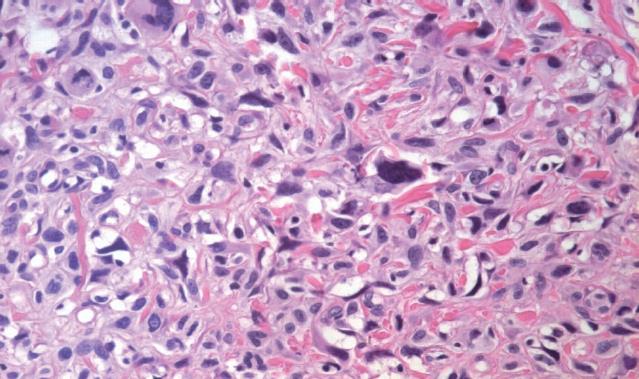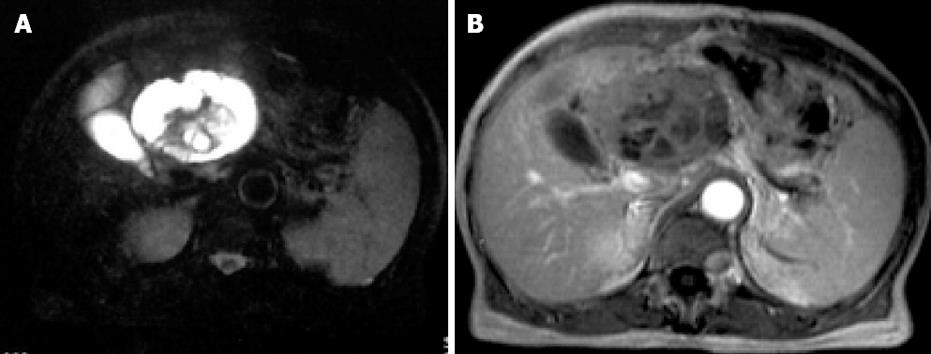Copyright
©2008 The WJG Press and Baishideng.
World J Gastroenterol. May 14, 2008; 14(18): 2942-2945
Published online May 14, 2008. doi: 10.3748/wjg.14.2942
Published online May 14, 2008. doi: 10.3748/wjg.14.2942
Figure 1 A: Pre-contrast CT shows a large, non-homogeneous, density mass in the head of the pancreas, with obvious atrophy in the body and tail of the pancreas; B: Lesion illustrates a well-defined, multilocular cystic mass with a cystic wall, fibrous septa and enhancement of solid components on post-contrast CT.
Figure 2 Pathology of the pancreatic mass shows spindle cells arranged in a storiform pattern, with varying numbers of polymorphic neoplastic and multinucleated cells (HE, × 200).
Figure 3 Immunohistochemical staining shows that the tumor cells are positive for CD68 (A) and vimentin (B) (× 250).
Figure 4 A: MR fat-saturated T2-weighted image shows a large, nonheterogeneous, hyperintense lesion in the liver, with a hypointense area in the central part of the tumor; B: Contrast-enhanced T1-weighted image shows a large multilocular cystic mass with a cystic wall, fibrous septa and enhancement of solid components.
- Citation: Yu RS, Wang JW, Chen Y, Ding WH, Xu XF, Chen LR. A case of primary malignant fibrous histiocytoma of the pancreas: CT and MRI findings. World J Gastroenterol 2008; 14(18): 2942-2945
- URL: https://www.wjgnet.com/1007-9327/full/v14/i18/2942.htm
- DOI: https://dx.doi.org/10.3748/wjg.14.2942
















